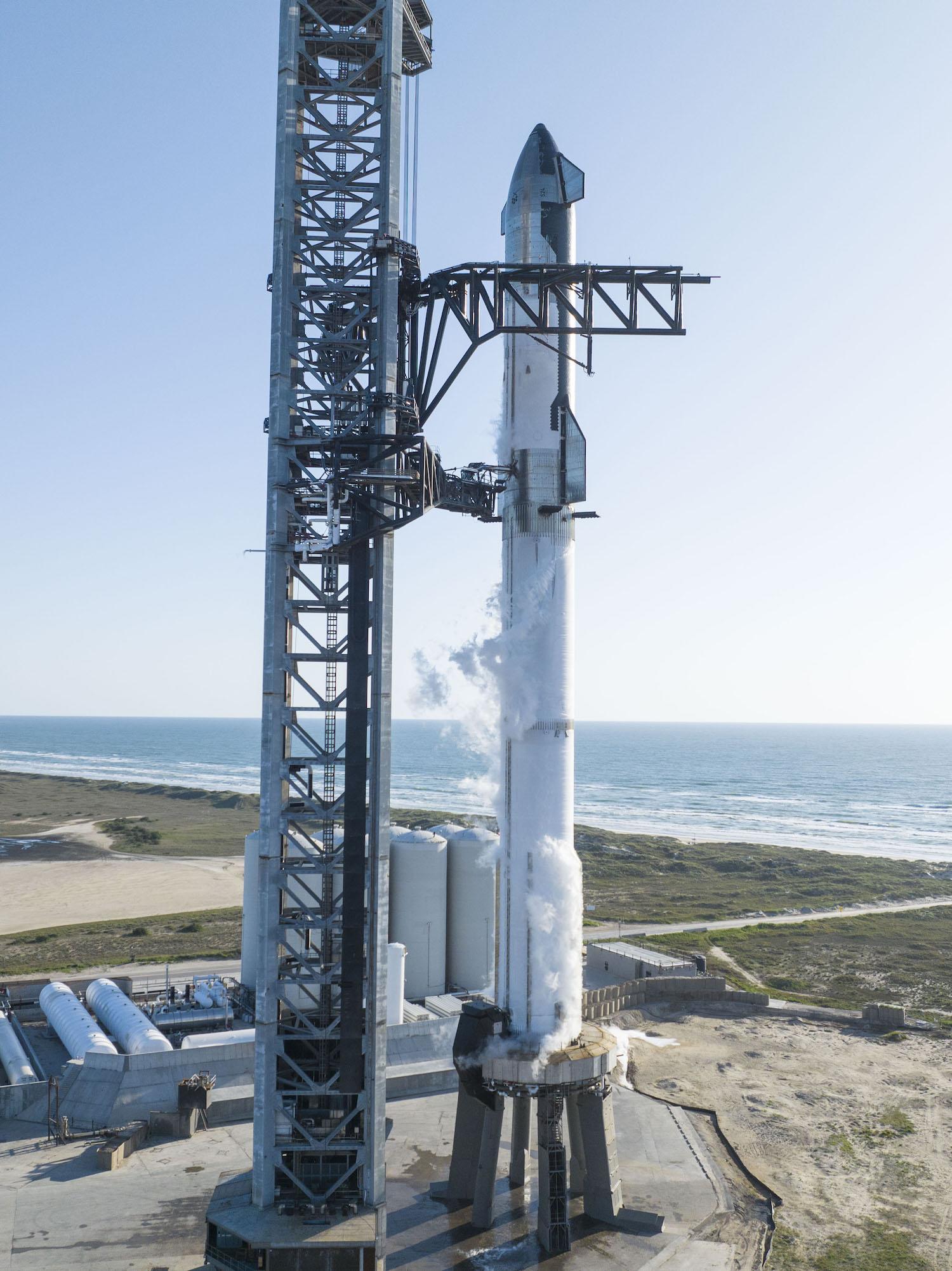
SOUTH PADRE ISLAND, TEXAS—SpaceX will try again on April 20 to send a Starship spacecraft into a 90-min. flight test around the Earth following launch aboard its first Super Heavy rocket.
Liftoff from the company’s private spaceport on Boca Chica Beach, located just south of here on the southern tip of Texas, is targeted between 9:28 a.m. and 10:30 a.m. EDT (8:28 a.m.-9:30 a.m. local time).
SpaceX fueled the Starship/Super Heavy vehicle with more than 10 million gal. of liquid methane and liquid oxygen on April 17, but the launch attempt was called off due to problems with a valve used to help pressurize a propellant tank in the Super Heavy first stage.
“The valve that charges the helium gas to the fuel tank was frozen due to cooling, and gas charging did not go well,” SpaceX customer and launch guest Yusaku Maezawa wrote on Twitter. He is a Japanese entrepreneur who has chartered a Starship ride for a flight around the Moon.
Starship/Super Heavy is a two-stage, fully reusable, multipurpose transportation system designed to put 100,000-165,000 tons into orbit. NASA awarded SpaceX a multibillion-dollar contract to use Starships to shuttle astronauts to and from lunar orbit and the Moon’s surface.
The first stage, known as Super Heavy, has never flown. For the upcoming integrated flight test, SpaceX will not attempt to land or recover the booster. But future versions will be designed to return it for reuse, similar to what happens with SpaceX’s current fleet of Falcon 9 boosters.
The 226-ft.-tall Super Heavy is outfitted with 33 methane-burning Raptor engines, which can provide more than 16.7 million lb. of force at liftoff, twice the power of NASA’s Space Launch System Moon rocket, which debuted in November.
After the booster separates from the Starship upper stage, it is expected to reignite engines and attempt to make a soft landing in the Gulf of Mexico about 20 mi. off Texas.
SpaceX launched a series of Starship second-stage prototypes for a total of nine suborbital, high-altitude and landing tests between July 2019 and May 2021, but has never put the vehicle into space.
If the upcoming launch is successful, the Starship test vehicle, designated Ship 24, will separate from the first stage and ignite its six Raptor engines. The burn, slated to begin 2 min. 57 sec. after launch, is expected to last 6 min. 17 sec. to position the ship for a near-orbital ride around the Earth.
Like the Super Heavy, the Starship test vehicle will not attempt a landing. It is expected to make a nonpropulsive ballistic splashdown into the Pacific Ocean about 62 mi. off the northwest coast of Kauai, Hawaii, 90 min. after launch.
